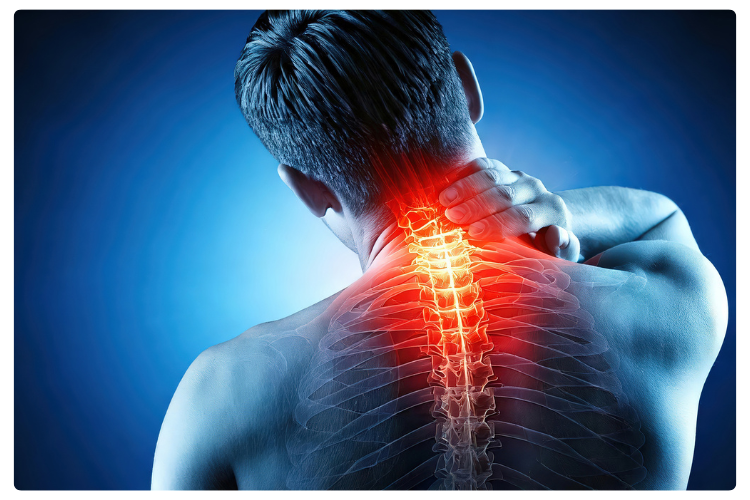
I. OVERVIEW
Neck pain has become a major global cause of disability and is now recognized as a growing public health concern. Its prevalence is high across all age groups and is comparable to that of low back pain. Recent data show that 73% of university students and 64.7% of individuals working from home experience neck or back pain, with nearly 40% reporting reduced productivity because of it.
One of the leading contributors to this rise is our increasing dependence on digital devices. Extended hours spent texting, typing, or browsing on smartphones and computers have significantly changed the way we hold and move our bodies. This repetitive forward-head posture has given rise to a modern spinal condition known as Text Neck Deformity.
"Text neck" deformity refers to the progressive strain and postural changes that develop from constantly looking down at screens. Over time, this leads to muscular imbalance, loss of the natural neck curve, stiffness, and even visible deformity. As technology use continues to grow, understanding and addressing text neck has become essential for maintaining spinal health and preventing long-term complications.
II. SYMPTOMS
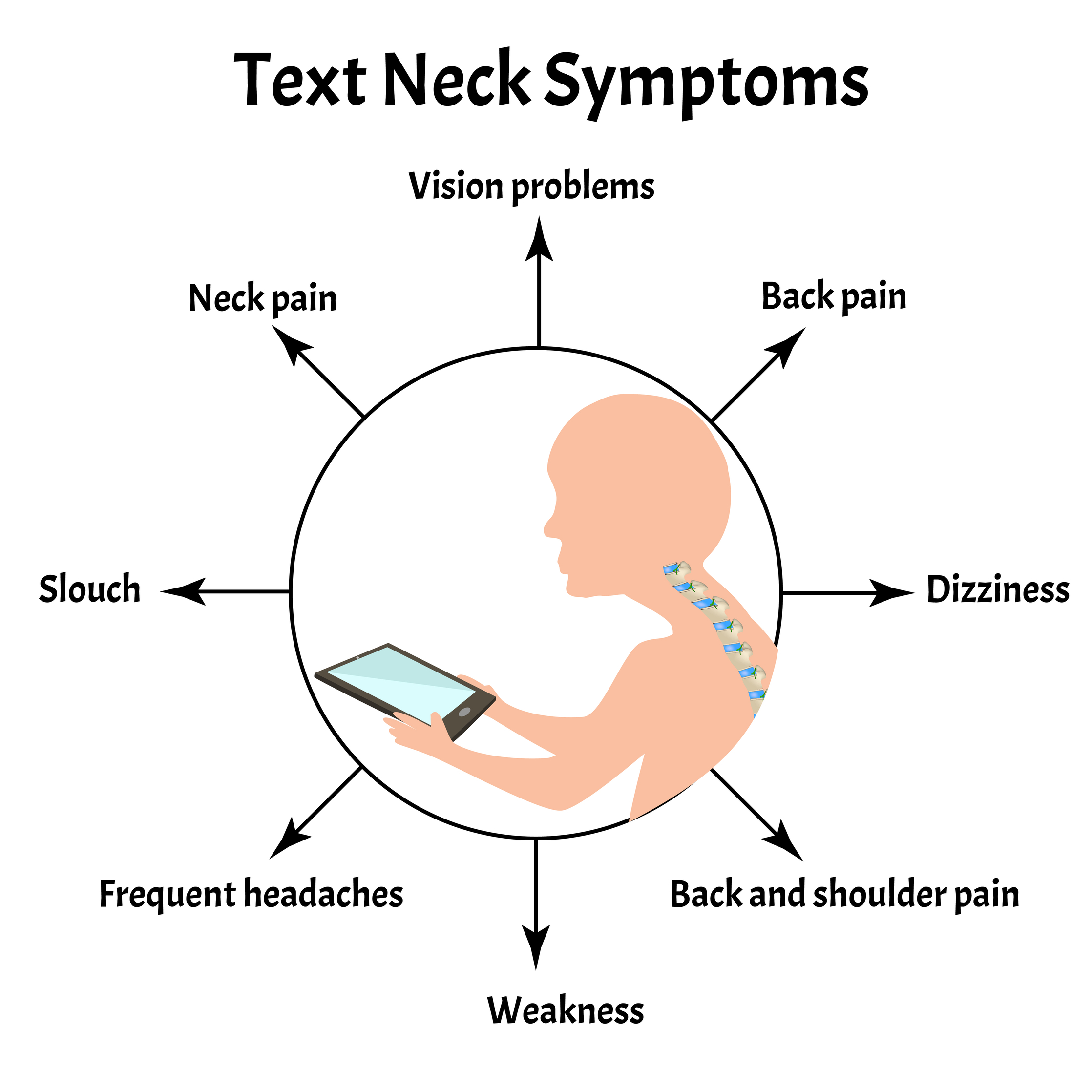
Text neck can cause a wide range of symptoms, many of which may be mistaken for general neck strain or tension. Common signs and symptoms include:
- Neck pain and stiffness, especially after prolonged phone or computer use
- Headaches often start at the base of the skull and radiate upward
- Muscle spasms in the neck, shoulders, or upper back
- Pain or discomfort between the shoulder blades
- Numbness or tingling sensations in the neck, shoulders, or arms—a sign of nerve involvement
- Weakness or radiating pain extending down to the arms or hands when nerves are compressed
- Sharp, sudden pain in the neck when looking down at a device
- Postural changes, such as a forward head position or rounded shoulders
In essence, text neck puts continuous stress on the
spine, neck, and shoulder muscles, tendons, and nerves. Reducing screen time, improving posture, and performing regular stretching or strengthening exercises can help relieve these symptoms and prevent further strain.
III. CAUSES

Text neck injury develops from the repetitive forward head posture that occurs when we spend long periods looking down at phones, tablets, or computers. This posture places excessive and prolonged stress on the neck and upper back as the muscles, ligaments, and joints work harder to support the weight of the head.
In a neutral, upright position, the human head weighs about 10–12 pounds. However, for every inch the head moves forward, the load on the cervical spine increases dramatically. At a 60-degree tilt, this pressure can reach up to 60 pounds—equivalent to carrying a heavy bag on your neck all day.
Over time, the continuous forward-leaning position causes the neck’s natural curve to flatten or reverse, leading to chronic stiffness, pain, and reduced mobility. The surrounding muscles and ligaments may become overstretched and weakened, while the spinal discs experience greater compression, resulting in anatomical and biomechanical changes.
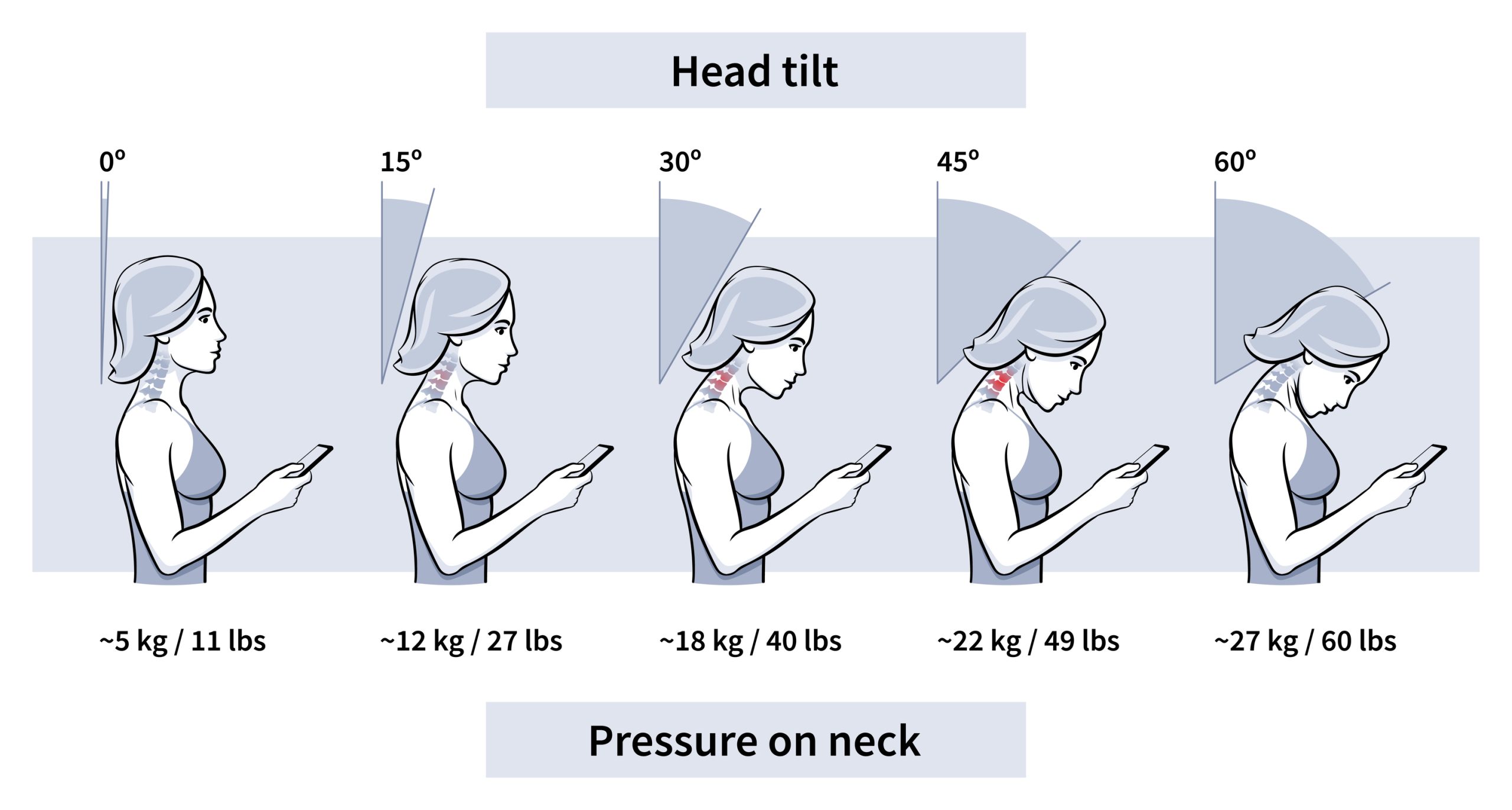
A study examining head-supported loads found that changes in head position from neutral to flexed or rotated significantly increased muscle activity in the neck extensors — by as much as 46% under added frontal load — and elevated strain in the sternocleidomastoid muscles by up to 265% during rotation (Guan et al., 2023). These findings confirm that sustained or repetitive forward head positions place substantial stress on the neck’s supporting muscles, increasing fatigue and the risk of chronic discomfort and dysfunction.
Over time, this imbalance contributes to poor overall alignment, including rounded shoulders, upper back hunching, and potential nerve compression. If unaddressed, text neck can progress into long-term musculoskeletal problems that affect posture, performance, and daily comfort.
Prolonged screen time, lack of movement breaks, and poor ergonomics remain the main driving factors—but with posture awareness, stretching, and strengthening, this condition can be prevented or even reversed before permanent structural changes occur.
IV. RISK FACTORS
Text neck deformity—also known as forward head posture syndrome—is a postural disorder resulting from repetitive neck flexion during digital device use. Over time, this chronic position may lead to structural and muscular adaptations in the cervical spine. The following are the key risk factors that contribute to its development and progression.
- Prolonged Forward Head Posture - Holding the head in a forward or downward position for long periods significantly increases mechanical load on the neck. For every 15 degrees of forward tilt, the effective weight of the head increases by approximately 10–12 pounds, accelerating fatigue in the cervical and shoulder stabilizing muscles.

2. Excessive Screen or Device Use - Spending several hours daily on smartphones, tablets, or computers without breaks compounds neck strain. Prolonged screen time has been correlated with a higher prevalence of neck pain and altered cervical curvature among frequent device users.
3. Poor Ergonomic Setup - Using devices positioned too low or lacking proper back and arm support encourages neck flexion and rounded shoulder posture. Poor ergonomics remain one of the most consistent external risk factors associated with text neck deformity.
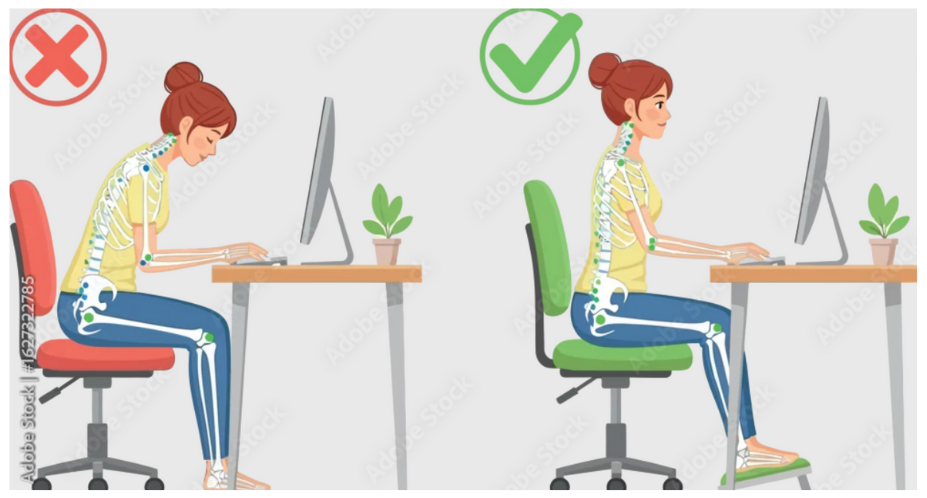
4. Weak or Imbalanced Neck and Shoulder Muscles - Weak deep neck flexors and scapular stabilizers, combined with tight sternocleidomastoid and upper trapezius muscles, reduce the ability to maintain neutral alignment. This imbalance can reinforce faulty posture and increase strain on cervical joints.
5. Sedentary Lifestyle and Physical Inactivity - A lack of regular movement decreases muscle endurance, flexibility, and postural awareness. Extended sitting—especially in slouched positions—further increases the risk of neck pain and structural imbalance.

6. Early and Frequent Device Use Among Youth - Children and adolescents are especially vulnerable because their musculoskeletal systems are still developing. Habitual forward head posture during growth years can alter natural spinal curvature and increase long-term deformity risk.
7. Female Sex and Lifestyle Factors - Studies suggest a higher prevalence of text neck among females, possibly due to differences in muscle strength and occupational device use. Other contributing factors include higher BMI, use of multiple devices, and sitting more than three hours daily.
8. Preexisting Cervical or Musculoskeletal Conditions - People with cervical spine degeneration, arthritis, or previous injuries are more prone to developing symptomatic deformities. Forward head posture exacerbates spinal loading and accelerates degenerative changes.
Pathophysiological Progression
Chronic forward head posture alters the mechanical axis of the cervical spine. The posterior neck muscles and ligaments are overstretched, while the anterior structures are compressed. Over time, these stresses can cause:
- Flattening or reversal of cervical lordosis,
- Muscle shortening and weakness,
- Disc and facet joint microtrauma, and
- Nerve compression or irritation.
If left uncorrected, these structural adaptations can become semi-permanent, resulting in visible deformity, stiffness, and chronic pain. However, posture-corrective programs and therapeutic exercise can restore alignment. In one randomized clinical trial, correctional therapy improved cervical lordosis by 14° and reduced forward head position by 12 mm after 16 weeks of structured rehabilitation.
V. Coping Strategies and Lifestyle Tips
Consistent postural correction, ergonomic adjustments, and lifestyle modifications are necessary to restore balance and prevent recurrence, rather than just providing temporary symptom relief.
These strategies integrate evidence-based recommendations and daily-life applications:
1. Maintain Proper Posture
Keep your ears aligned with your shoulders and your shoulders aligned with your hips. The head should remain upright—not tilted forward—whether standing or sitting. Frequent reminders or posture-tracking apps can help increase awareness and reduce unconscious forward head tilt.
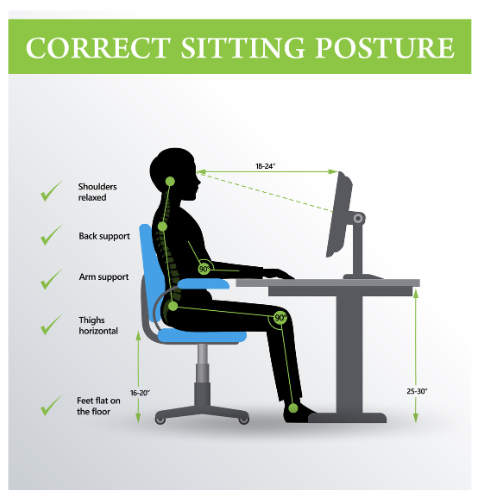
2. Adjust Device Ergonomics
- Raise screens to eye level. Use a stand, adjustable desk, or stack of books to bring screens closer to eye height.
- Use both hands and arms to hold devices instead of using one hand.
- Support your arms on armrests or pillows to reduce shoulder tension. Ergonomic improvements significantly decrease cervical and upper-back strain during extended device use.
3. Take Regular Movement Breaks
Follow the 20-20-20 rule: every 20 minutes, look 20 feet away for 20 seconds, and gently stretch your neck and shoulders. Incorporate short standing breaks or shoulder rolls every 30–45 minutes of screen time. Brief, frequent movement prevents muscle fatigue and spinal stiffness.
4. Strengthen Postural Muscles
Engage in exercises that activate the deep cervical flexors, scapular retractors, and thoracic extensors. Examples include:
- Chin tucks against a wall
- Scapular squeezes
- Prone “Y” and “T” lifts
- Resistance band rows
A consistent strengthening program helps realign the head over the shoulders and improves cervical endurance.
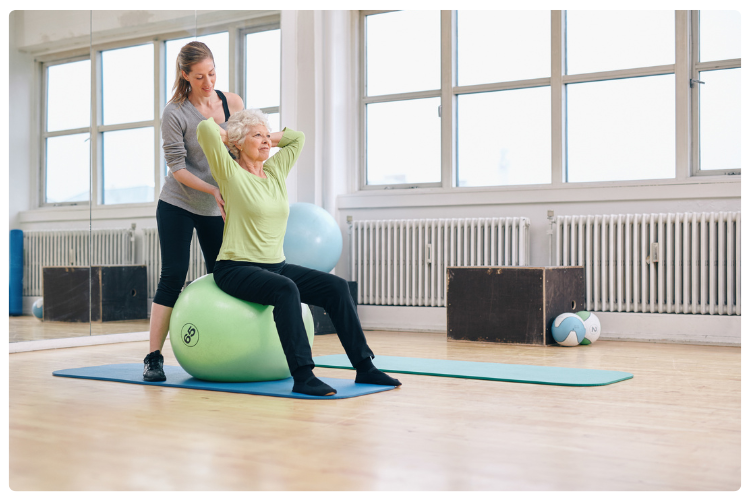
5. Stretch Tight Muscle Groups
Counteract tightness in the pectoralis major/minor, upper trapezius, and levator scapulae through gentle stretching. Focus on slow, sustained stretches (20–30 seconds) without bouncing. Flexibility training reduces pulling forces that contribute to rounded shoulders and neck strain.
6. Optimize Work and Study Environments
Ensure your chair provides lumbar and thoracic support. Adjust screen brightness to reduce forward leaning. For mobile users, consider using a stylus or voice commands to minimize repetitive downward gaze.
7. Prioritize Physical Activity and Recovery
Regular aerobic and resistance exercise promotes muscle balance, circulation, and joint mobility. Activities like yoga, swimming, and Pilates improve postural awareness and spinal flexibility. Adequate sleep and hydration further support tissue repair and reduce pain perception.
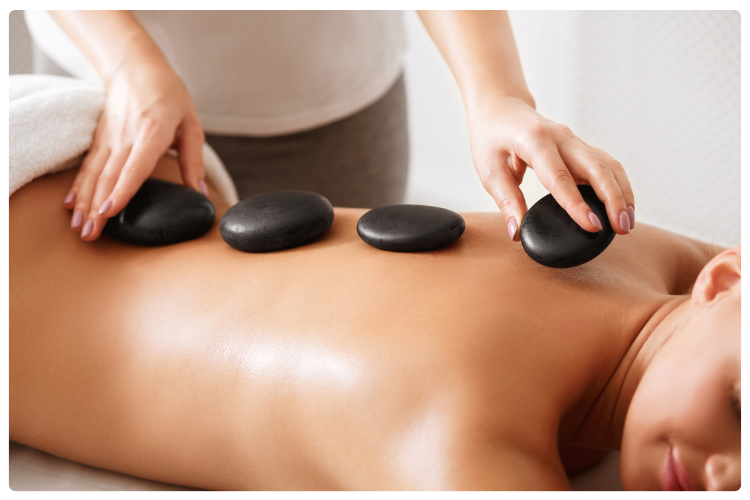
8. Use Heat or Gentle Massage for Relief
Applying a warm compress or using a soft massage device over the neck and upper back increases blood flow, eases tension, and promotes relaxation. This can be particularly beneficial after long workdays or before stretching routines.
9. Practice Mindful Posture Awareness
Mind-body techniques such as yoga, tai chi, or Alexander Technique cultivate postural mindfulness. Over time, these practices retrain neuromuscular control and help maintain proper spinal alignment without conscious effort.
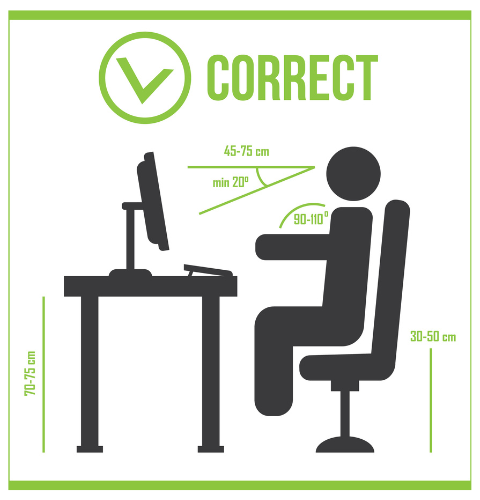
10. Seek Professional Guidance
If pain, stiffness, or postural deviation persists, consult a healthcare professional—such as a physical therapist, chiropractor, or rehabilitation specialist. Customized exercise programs and manual therapy can enhance correction and prevent progression.
VI. Prevention
Reversing these advanced structural changes is not as effective as preventing text neck deformity. What might help in reducing the risk is a consistent attention to posture, ergonomics, movement habits, and muscle health.
Here are some evidence-based strategies:
1. Ergonomic Device Positioning
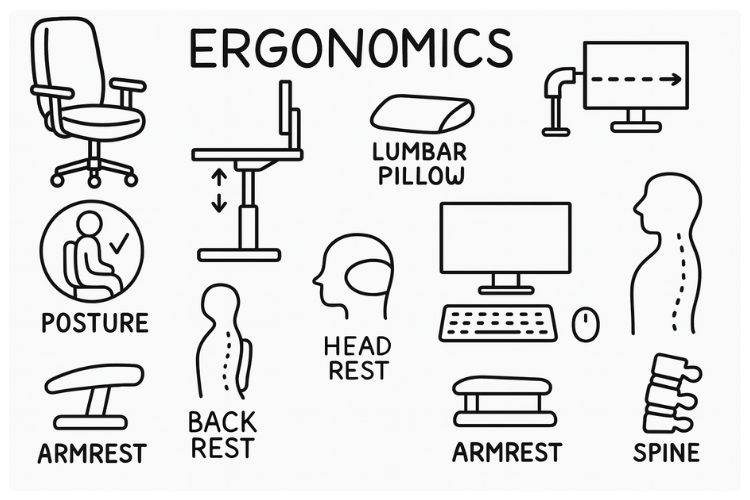
How:
Elevate screens (phones, tablets, monitors) so that your eyes look slightly downward rather than your neck bending forward. This minimizes forward head tilt and reduces cervical loading.
Use stands, holders, or mounts to keep devices at eye level or an optimal height.
For computer setups, ensure your monitor is at or just below eye level, with keyboard and mouse within comfortable reach.
2. Frequent Movement Breaks & Postural Shifts
Take regular breaks—ideally every 15 to 30 minutes—to stand, walk, or change posture. This interrupts sustained neck flexion and promotes tissue recovery.
Incorporate postural shift interventions: one study showed that active breaks and postural shifts prevented the onset of neck pain by ~59%.
Use reminders or alarms to prompt you to move or change position periodically.
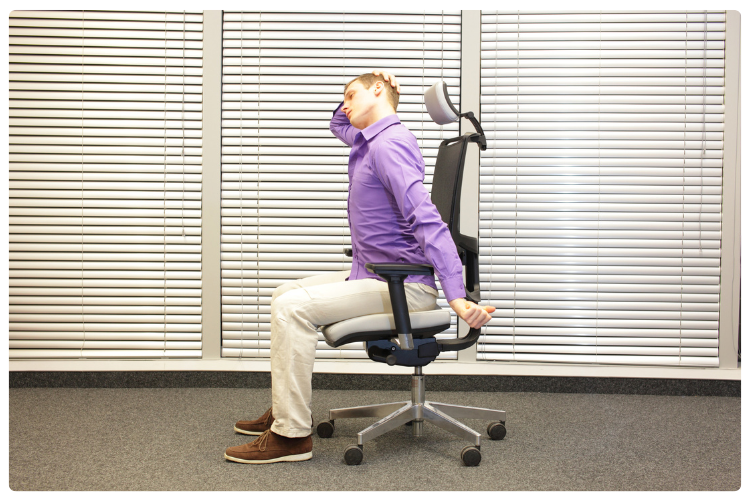
3. Corrective & Therapeutic Exercises
1. Engage in exercises combining stretching and strengthening, targeting the neck, upper back, and shoulder musculature. A meta-analysis found that therapeutic exercise programs effectively improved forward head posture, rounded shoulders, and thoracic kyphosis.
2. Specific beneficial movements include:
- Supine chin tucks
- Stretching the sternocleidomastoid and pectoral muscles
- Scapular retraction drills
- Strengthening of deep cervical flexors and thoracic extensors
- Studies show that after 8 weeks of posture-correction exercise, participants had reduced pain and improved postural alignment.
3. In people with chronic neck pain, therapeutic exercise also improved the balance between cervical muscle activity and posture, reducing pain severity.
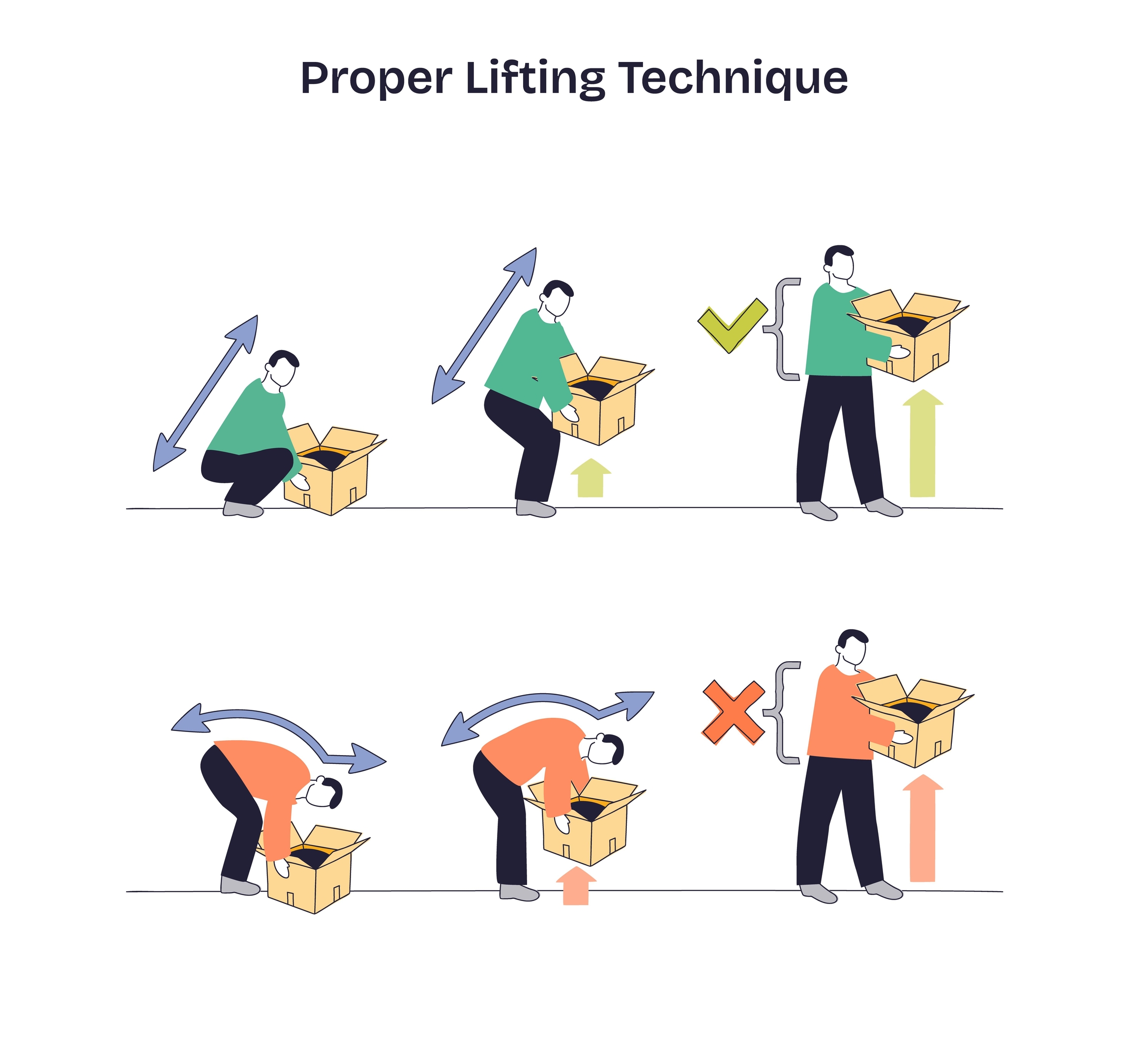
4. Postural Awareness & Education
- Learn and practice a neutral spine posture: ears over shoulders, shoulders over hips, and chest open.
- Use posture feedback systems or wearable devices to alert you when posture deviates. One study found that such feedback systems can change muscle activity and promote better alignment.
- Educate oneself on body mechanics during daily tasks—in standing, sitting, walking, and device use.
5. Environmental & Lifestyle Modifications
- Reduce overall screen time where possible, especially continuous device use.
- Optimize lighting, screen glare, and device contrast to avoid leaning forward to see clearly.
- Ensure good general physical activity and flexibility of the entire spine and upper body.
- Address ergonomic factors not only for the neck, but for the full kinetic chain (pelvis, spine, shoulder girdle). A good posture overall supports neck health.
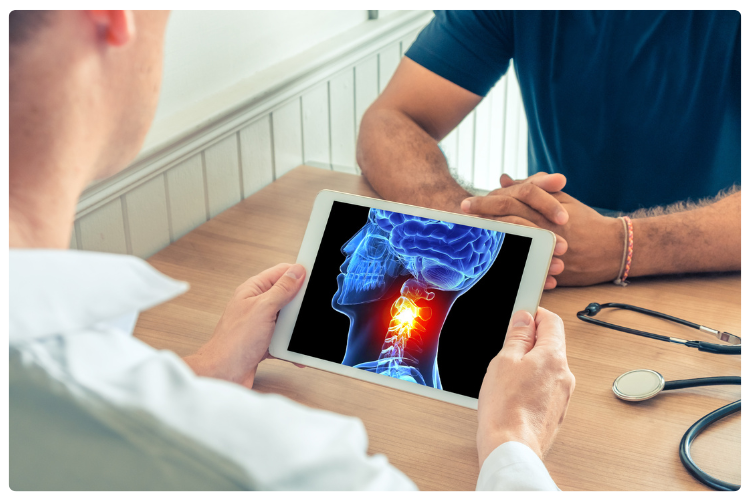
6. Regular Monitoring & Early Intervention
- Be attentive to early signs of neck stiffness, fatigue, or postural drift.
- At the first signs of discomfort, implement more frequent breaks, adjust posture, and begin corrective exercises.
- If symptoms persist (pain, tingling, limited motion), seek professional evaluation earlier to prevent structural progression.
References:
Vulput minim portti ipsume lectus dolors vertis semper platea intege venena lacusa tempor evenie laoret proina sagitt.
